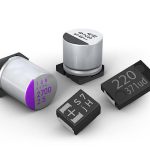
Battery explosions
In 2016, Lithium-ion batteries made headlines for all the wrong reasons. Samsung had to recall it’s Samsung Galaxy Note 7 shortly after its launch after several cases of explosions were reported. In Florida, a Note 7 exploded and in the process ignited a Jeep Grand Cherokee setting it on fire. In a separate incident in Horry County, a Note 7 exploded while being charged in a garage setting the entire structure in flames. Later in the year, several hoverboards from different manufacturers were also reported to have exploded. It’s unfortunate that the same chemical that gives batteries their functionality also makes them likely to catch fire.
These explosions are consequences of manufacturers pushing technology to the limit. Consumers are demanding phones with bigger screens, more power and that which offer longer battery life and fast charging speed. To meet these demands, manufacturers are doing everything they can to improve the efficiency of lithium batteries. According to a material scientist Lynden, we have already achieved close to 90 percent of the theoretically possible maximum battery life as far as lithium batteries are concerned. However, manufacturers are still pushing further to see how much more we can achieve. This push for more has resulted in a tendency to overcharge the lithium batteries leading to failures that could result in explosions.
What causes lithium batteries to explode?
Architecture of lithium batteries and how they work
To fully understand why batteries, explode, it is important to first understand what they are made up of and how they work. Lithium batteries have two electrodes, the cathode, and the anode. The cathode is the positive electrode whereas the anode is the negative electrode. The cathode is made of Lithium metal oxide while the anode is made of graphite. The two are separated by a membrane but are both are surrounded by an electrolyte.
When charging, lithium ions migrate to the anode. The opposite happens during discharging, the lithium ions move from the anode to the cathode. The electrolyte conducts current by enabling ions to move easily between the anode and the cathode. Despite the movement of ions between the electrodes, the cathode and the anode should never come in contact hence the presence of separators.
-
Causes of battery explosion
The separator is made of a thin, porous polypropylene. Its charged with the responsibility of keeping the electrodes from touching. In the event that they separator is breached; the electrodes will come in contact and result in fast and extreme heating which could result in an explosion.
Batteries also contain a flammable electrolyte. It is susceptible to combustion when it heats up, with exposure to sufficient oxygen, it can explode massively. Moreover, the electrolyte can burn one’s skin on contact.
Scenarios contributing to battery explosions
-
Production flaws
Samsung Note 7’s battery largely failed because of this. After a thorough investigation and scientific analysis, Samsung revealed one of the reasons for explosions was as a result of insufficient space between heat sealed protective pouch and its internals. This caused the batteries inside each battery to crimp hence weakening the separator that lies between the electrodes leading to a short circuit.
In other batteries used on the same phone, some cells did not have insulation tape and some batteries contained very sharp protrusions that ended up damaging the separator inside the cells leading to the anode and the cathode coming in contact. The batteries also had thin separators increasing the susceptibility to damage and short-circuiting.
-
Design Flaws
Devices are growing slimmer, lighter, and sleeker. This is putting a lot of pressure on battery designs since this demand that high-capacity cells will have to be packed into a small body. This will result in inadequate venting or thermal management, which could lead to the battery heating up. The heat will then trigger a chemical reaction that will lead even more heat, which often ends up in an explosion or fire.
-
Overcharging
This does not happen due to leaving the phone plugged in all night long as many have been led to believe. It happens due to manufacturer defects that could occur when the circuit that protects against this is faulty.
Nonflammable electrolyte
In a bid to curb battery explosions, some scientists are now developing a non-flammable electrolyte that will not burn when heated and exposed to oxygen. Nitash Balsara, a battery scientist thinks at Lawrence Berkeley National Laboratory, thinks that he has found the proper material for the job. Balsara alongside his co-inventor has formed a company called Blue current further develop the new electrolyte. The company is backed by Faster LLC.
The new electrolyte developed by Blue Current is a fluorinated liquid called perfluoropolyether (PFPE). According to Balsara, things that contain fluorine do not burn easily. The professor of Chemical and Biomolecular Engineering and researcher further emphasized that they will only evaporate but will not catch fire. In a paper published last year,in ‘Proceeding of National Academy of Science’, Nitash alongside other co-authors stated that the PFPFE based electrolyte has reasonable conductivity and exhibits groundbreaking transference numbers. They also stated that they are compatible with standard battery electrodes.
This milestone is not without challenges. Balsara confirmed that the fluorinated compound is not as conductive, this means you cannot charge the batteries or discharge them fast neither can you withdraw current fast. Blue Current’s goal is now to hasten the motion of atoms through the electrolyte to enable fast charging and discharging. Owing to this shortcoming, these batteries are not appropriate for vehicles. It can only be hoped that sufficient progress will be made soon enough to enable this electrolyte to be effectively used in phone batteries and other portable devices. This way, we will be able to avert the explosions that have become quite rampant.






















